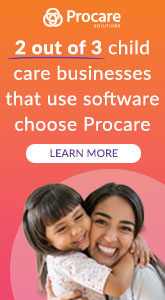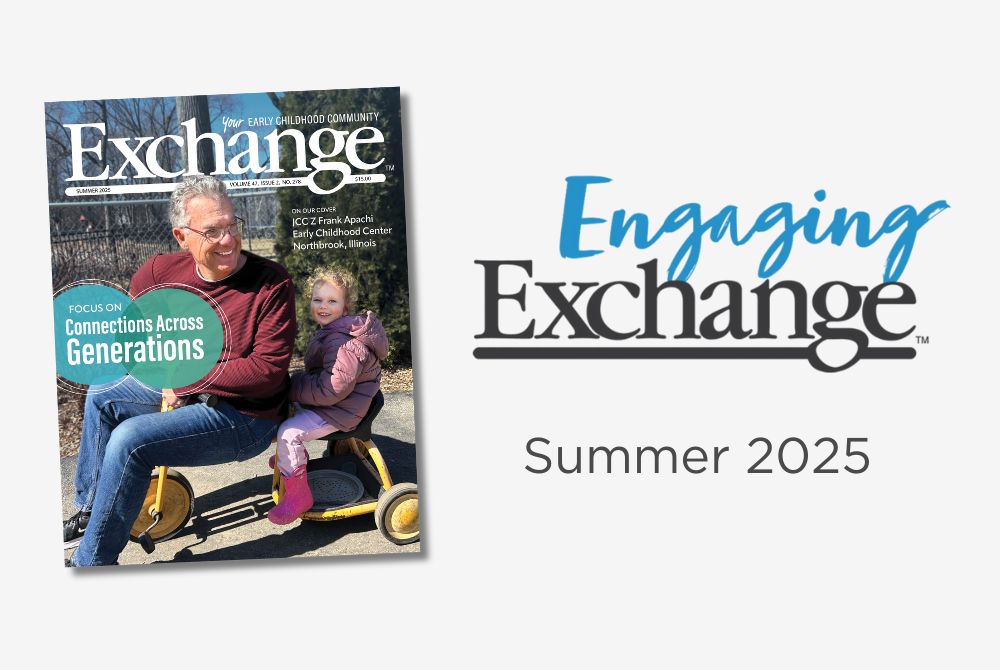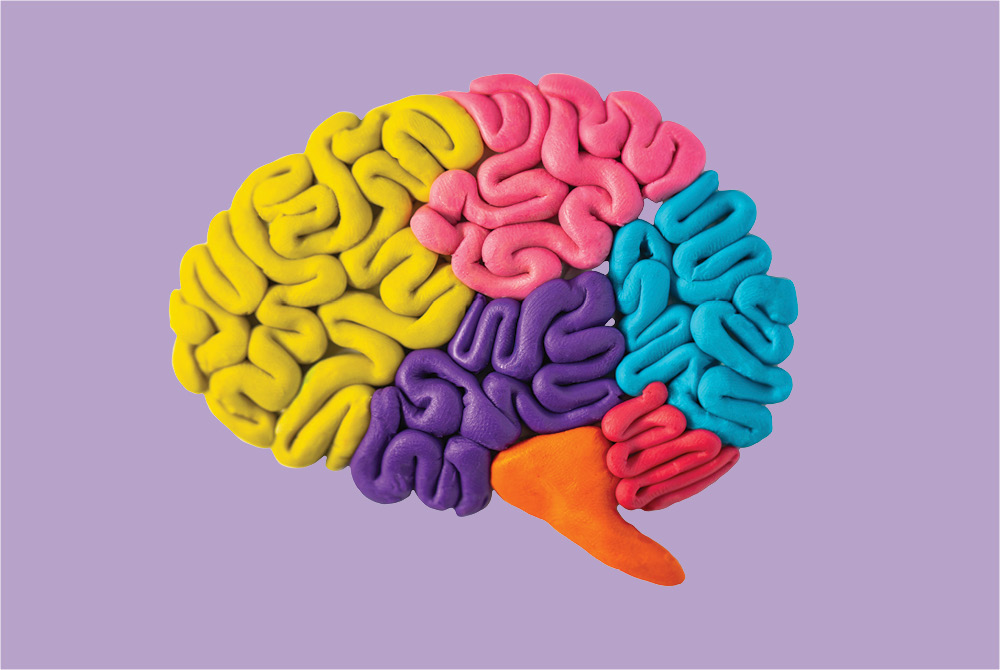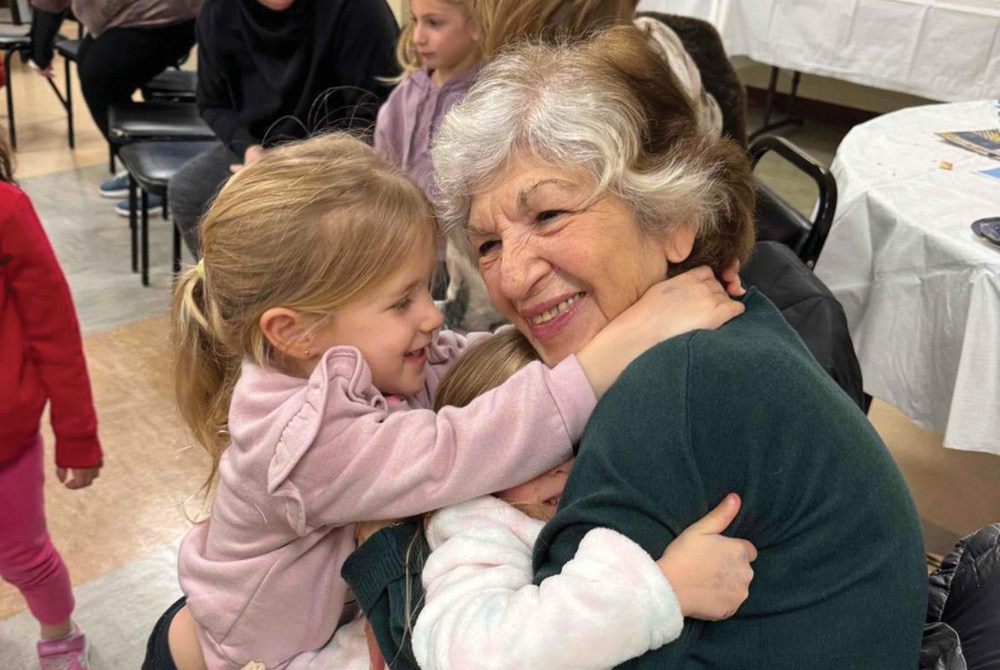We all know that children love music. While singing and dancing to music is enjoyable at any age, making music with young children beginning at birth also helps them develop important skills, such as language, social skills, self-regulation, and coordination.
Here are five ways educators and caregivers at home can use music to support children’s development:
1. Help children learn through imitating.
Children love to imitate what they see and hear adults or other children do, either repeating the exact phrasing or experimenting with their own version. When young children copy what others are doing, they learn to pay attention, observe, and then put their observations into action. When an adult, in turn, imitates them, their creativity is stimulated and leadership skills are supported.
Consider these songs for imitating music and rhythm: “Head, Shoulder, Knees, and Toes” and “If You’re Happy and You Know It” are great imitation songs. If you have rhythm sticks in the classroom, they are perfect for an imitation activity. If you don’t have sticks, you can use your fingers.
Try “Stick Tune” from Music Together Family Favorites® to explore different ways to play and move your “sticks” to the beat. Start by tapping them together or on the floor as you sing, and then try faster or slower beats. If you see the children trying a certain movement with the sticks, imitate them. Then ask the children to take turns being the leader as the rest of the class follows the way they are clicking their sticks.

2. Support language development by singing songs without words.
Many cultures have singing traditions that use the expressive potential of “vocables”—syllables without meaning—instead of words or poetry. The songs are not only instrumental. Instead of singing words, you sing sounds. Examples include “mouth music” in the Hasidic and Irish traditions, Native American chants, and jazz “scat” singing
Songs without words are often the first songs in which pre-verbal and dual-language learners are able to participate. Because children don’t have to process both language and music at the same time, songs without words allow them to focus on just the music without worrying about getting the words right. Songs without words also help to support children’s language development in any language, by giving them practice in articulating different sounds and syllables.
Try these songs without words: Shirley Ellis’s “The Name Game,” singing the classic “Brahms’ Lullaby” on “doo,” or try “Biddy, Biddy” or “Dee da Dum” from Music Together Family Favorites®.
Actually, any song can become a song without words: Simply sing along to the melody using a vocable (e.g., la, doo, etc.) instead of the song’s lyrics. You can also make music together by pretending to be an instrument by singing its sound as the vocable. (Try “toot” for trumpet, “nyah” for fiddle, or “brrum” for drum.) Another day, pretend you’re visiting a zoo and sing using the sounds of the animals that you see there. You can also sing the sounds a Letter of the Day makes or words associated with a theme the class is studying (e.g., transportation).

3. Helps children develop bilateral coordination through dance.
Experiencing a wide variety of ways to move helps children develop coordination, including bilateral coordination. There are several types of bilateral coordination, including:
-
- The ability to do the same movement using both sides of the body at the same time, like picking up a block with two hands.
- Moving in the same way but alternating sides of the body, such as walking.
- Making different movements on each side of the body at the same time, such as throwing a ball with just one hand.
Since bilateral coordination requires both sides of the brain to communicate and share information, a musical activity that fosters bilateral coordination also supports brain development.
Check out these engaging songs for movement:
Put on any song that has a great beat for dancing, such as The Chieftains’ (traditional Irish band) “Boil the Breakfast Early;” Chubby Checker’s “The Twist,” or “Obwisana” from Music Together Family Favorites.®
As you play the recording, lead the children in first moving slowly, then faster, using both sides and all parts of the body. Next, try moving one body part on just one side, like raising and lowering your right arm. Then try the same movement with the left arm. Then move both arms in the same way at the same time, or move each arm in a different way at the same time. Children are now experiencing different types of bilateral coordination. Have fun and experiment with different body parts—knees or ears may be particularly fun to try!
4. Support self-regulation with call-and-response songs.
Chants and songs that use a call-and-response pattern naturally support children’s developing self-regulation—the ability to control their energy level, emotions, urges, and behaviors. When the adult is the leader, the children have to pay attention, listen to the words, and wait for their turn to give a response (or echo) at the right time, building self-regulation skills. Leadership skills are developed when each child gets a turn to lead the class.
Try these enjoyable call-and-response songs: From classic children’s songs like “Miss Mary Mack,” to traditional folk songs like “No More Pie”, to Music Together Family Favorites® songs like “Rhythms and Rhymes” and “Singin’ Every Day,” call-and-response songs are not only great for supporting self-regulation, but they can also help to foster cooperation and group process as the children gain experience singing the “response” or even the “call” in unison.
5. Help children gain emerging math skills by engaging with contrast.
Children often learn what something is by comparing it to something it isn’t—that is, through contrast. Experiencing contrasts such as big/small, loud/soft, and fast/slow help children recognize patterns and sequences and make connections and logical predictions. These are all important parts of early math skill development.
Check out these song options that are great for contrasting experiences: The Laurie Berkner Band’s “We Are the Dinosaurs” offers fantastic contrasting music and movement experiences, and “Sandpiper” and “Don Alfredo baila” from Music Together Family Favorites® offer children experience with fast/slow contrasts. You can also play with the tempo (i.e., speed) and volume of any song you play or sing. Make sure to incorporate movement so children get a kinesthetic experience in patterns and sequences through contrast.
As you can see, a song does not have to be written to teach something for it to support a child’s learning. Developmentally appropriate and participatory music and movement activities holistically, naturally, and playfully help children develop skills essential to school and life success. That’s because music-learning supports all learning®.
Lauren Guilmartin, M.A., is the director of early learning at Music Together Worldwide, where she oversees the in-school and research departments. Guilmartin manages projects using variations of the Music Together curriculum in a wide variety of early care, education, early intervention and outreach settings. She frequently presents at education conferences in the U.S. and abroad. Guilmartin earned her master's in developmental psychology at Teachers College, Columbia University, with a focus in early childhood development and education, and her bachelor's degree from Brown University.
Related
ADVERTISEMENT











